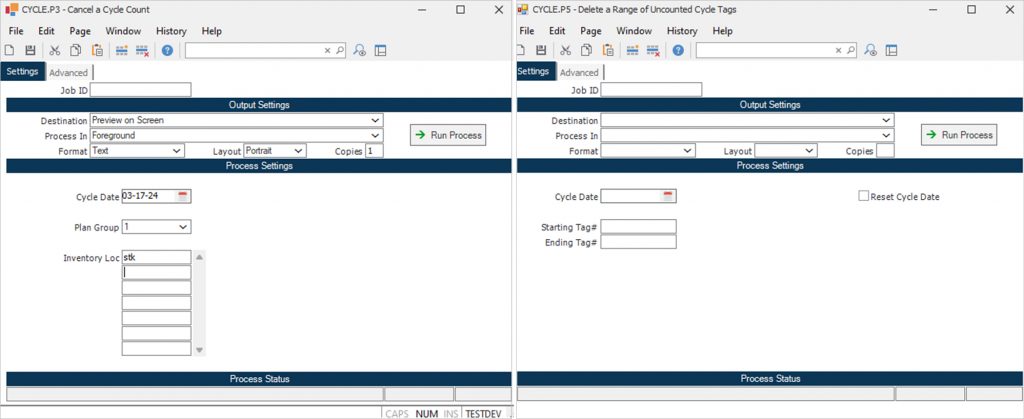By Bill Baker, Senior Manufacturing Consultant
Inventory accuracy is crucial for the success of any business with manufacturing and distribution operations. With the right tools and processes, business leaders can ensure their inventory is accurate, up to date, and in service to its customers. Rover ERP offers robust capabilities via its cycle counting module. This article will guide you how to use Rover ERP cycle counting module to take your inventory management to the next level.
Why cycle count periodically or even daily?
Cycle counting is a perpetual inventory auditing process where a small subset of inventory is counted daily, rotating through parts rather than a once annual complete inventory count. This method helps in maintaining inventory accuracy without the need for the costly “event” of shutting down operations. Rover ERP provides a systematic approach to cycle counting, ensuring your inventory data accuracy and thus your service levels to your customer are consistent all year instead of “just after your annual count”.
Fundamentals of cycle counting
There are many ways to approach that maybe business specific, but a first step is to classify your parts in terms of the level of importance that inventory is accurate. This by default is set up and could be by dollar value, it could be by quantity, or to improve on time fulfillment rates in a certain segment of your business. In Rover ABC categorization is utilized so you can determine how frequently “A” parts, “B” parts, and “C” parts are counted based on your business need and desired level of accuracy.
Setting Up Your System
1. Command PARTS.P1 – Maintaining ABC Status:
- Adjust the A-code cutoff and B-code cutoff to match your specific inventory breakdown requirements. This also can be managed through mass uploads or manually adjusted to ensure accurate ABC classification (illustrated below).
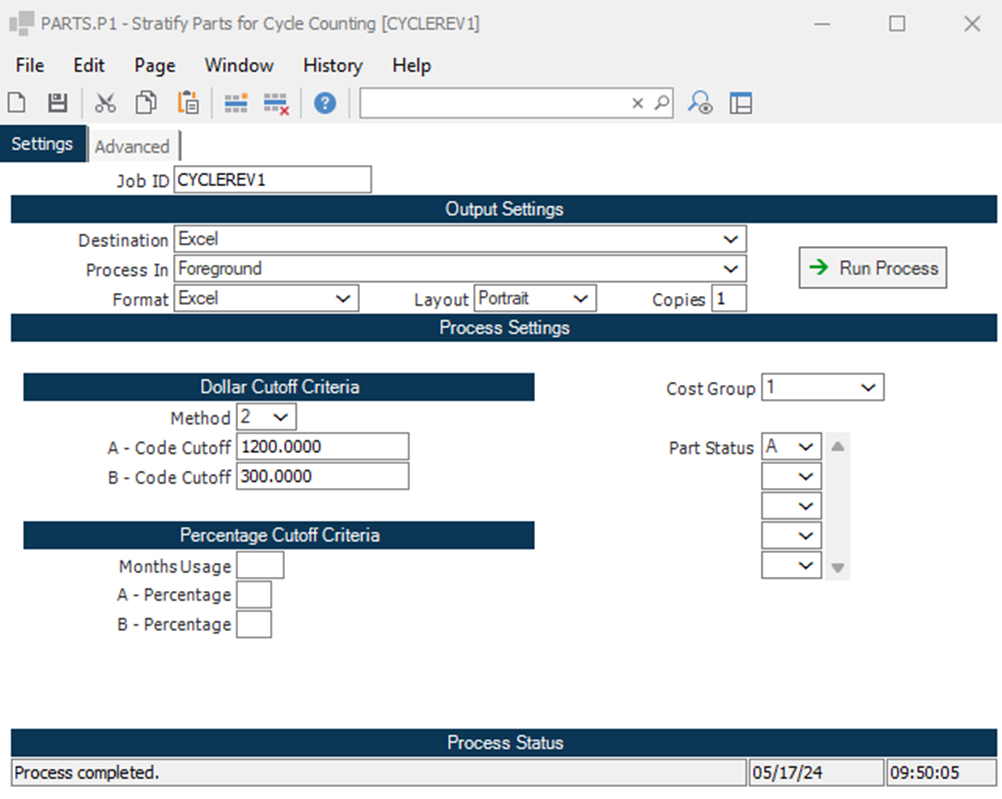
Alternative use PARTS.E to update parts individually…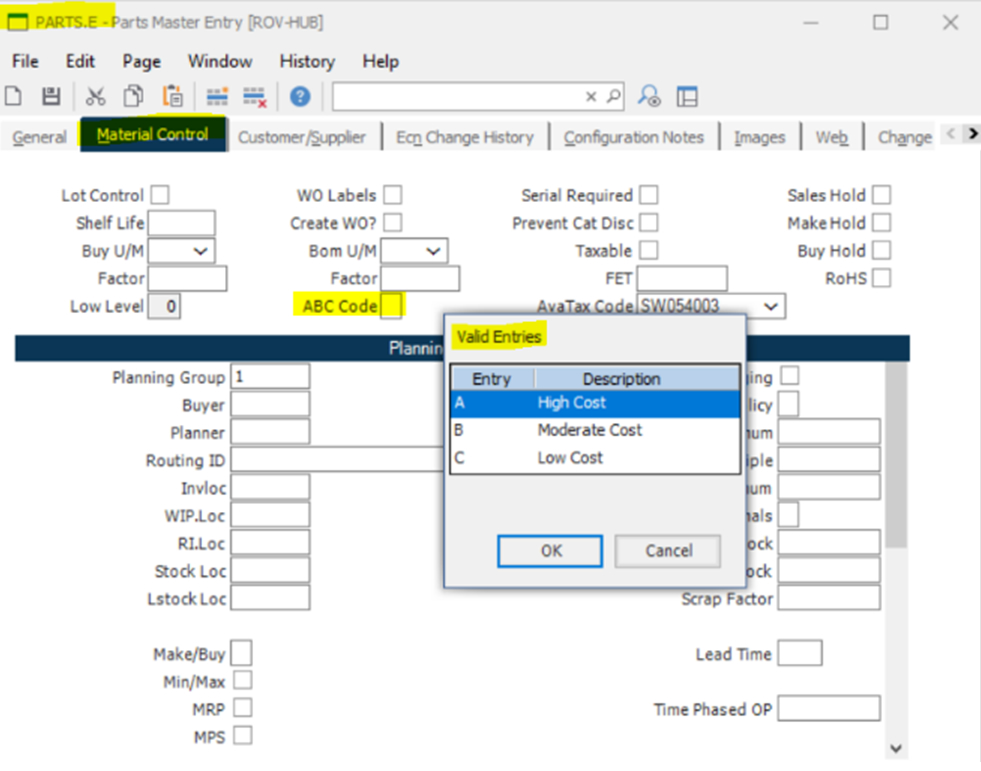 Or use PARTCHANGE.E to update via mass update.
Or use PARTCHANGE.E to update via mass update.
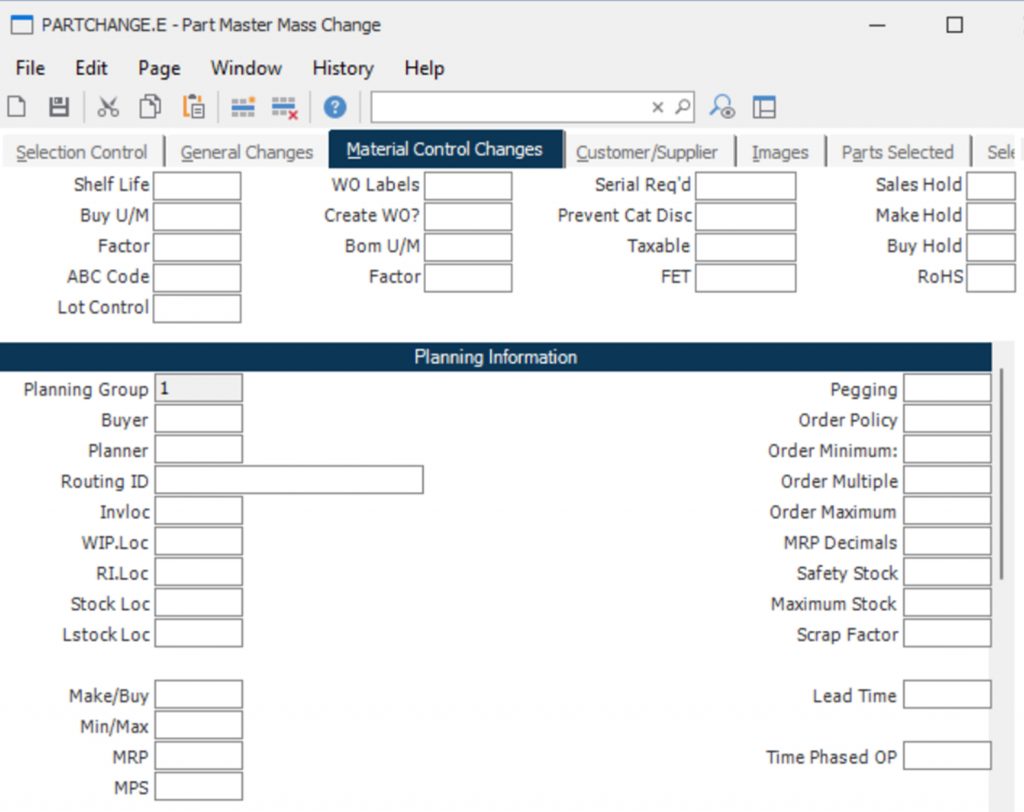
2. INV.CONTROL – Establish Count Frequency:
- Define how often items should be counted based on their ABC classification. For example, items classified as A might be counted every 90 days, B every 180 days, and C every 360 days. Exclude categories as needed and specify locations to be included in the counts.
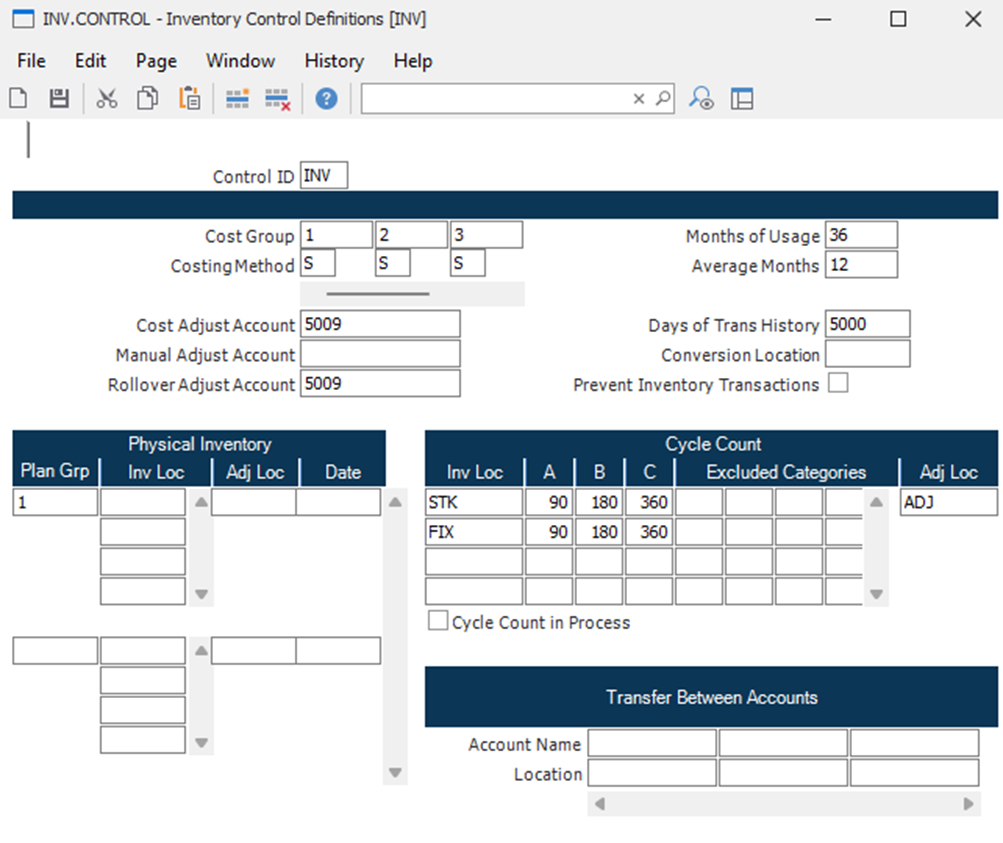
3. INV.P1 – To assign cycle dates
- This can be run to initiate a program with a group of parts and should be ran annually in this example or as often as you need to reset the dates for all parts.
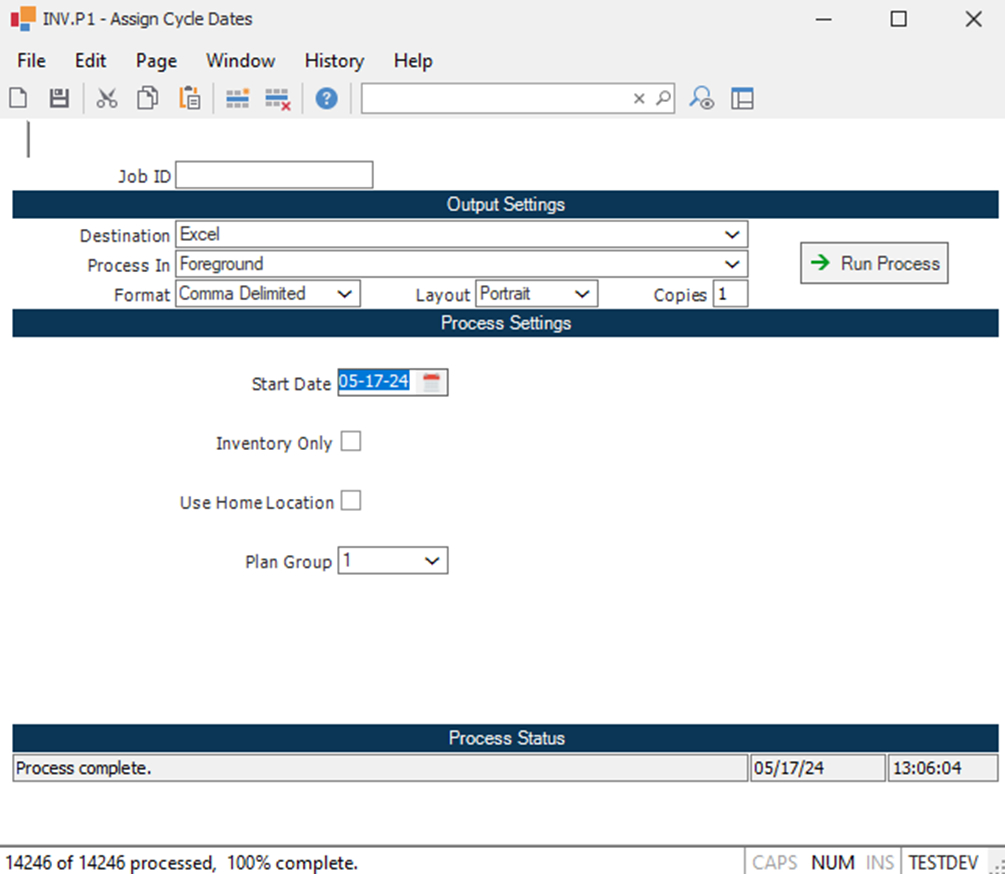
4. INV.R3 – To see how many counts are scheduled per day
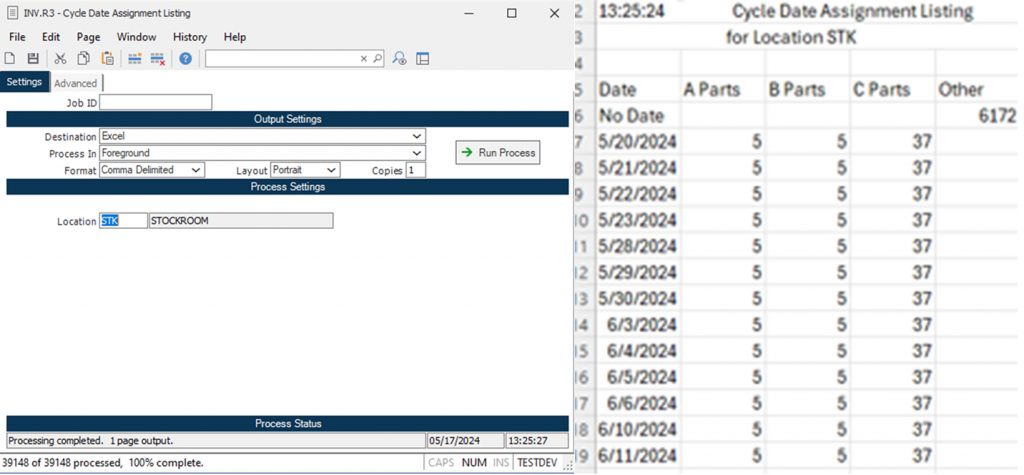
Daily Cycle Counting Process
1. CYCLE.P1 – Create Cycle Count Records:
- This can be run to initiate a program with a group of parts and should be ran annually in this example or as often as you need to reset the dates for all parts.
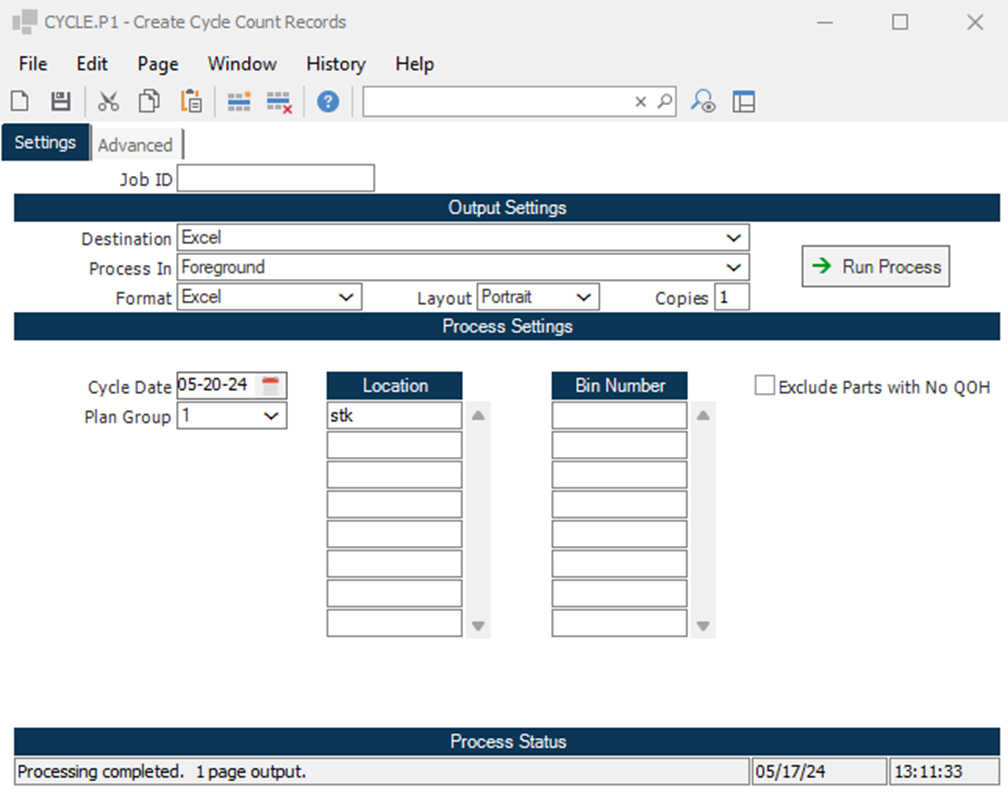
2. Create Count Sheets via CYCLE.R1:
- Can be run to create a count sheet for a day or period
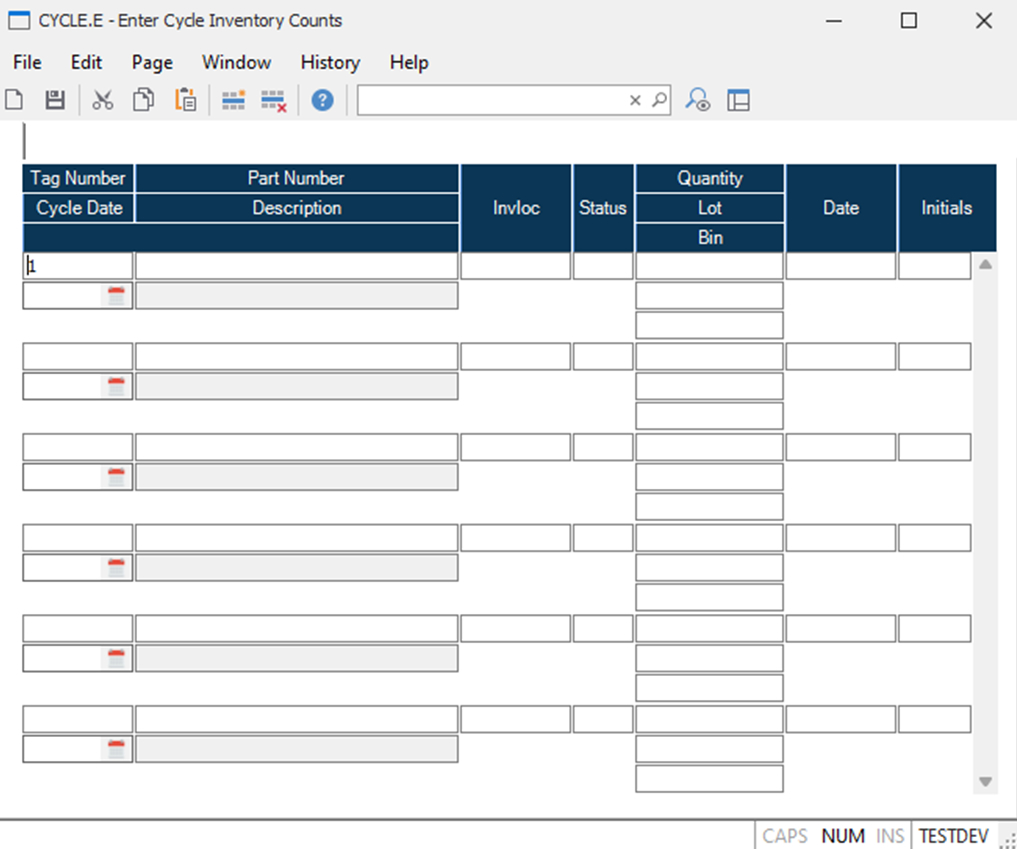
3. Enter counts in CYCLE.E once a count has been done

4. Check Counts vs. System Quantities using CYCLE.R3:
- Perform checks on the counts against system quantities. This step ensures any discrepancies are identified early before posting them as adjustments.
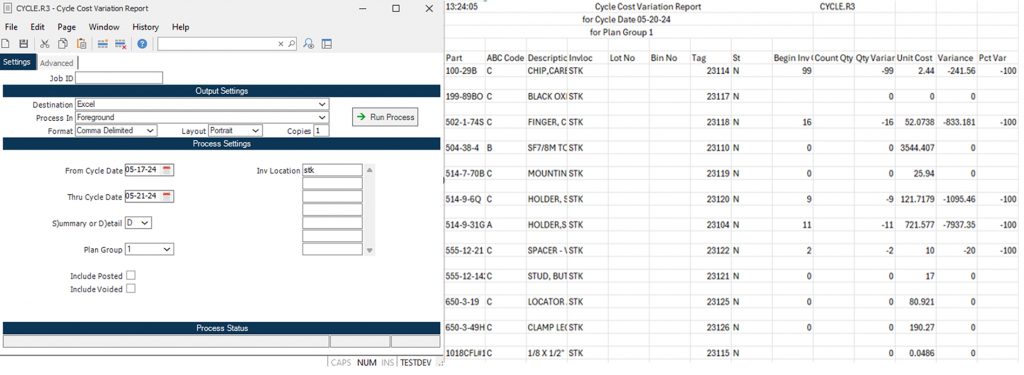
5. Recount and Update using CYCLE.R3 and CYCLE.E:
- Conduct any necessary recounts based on Cycle.R3 outputs, you can add a column on the end for a “recount”. Update the counts in the system if discrepancies are found and resolved by updating the data in CYCLE.E.
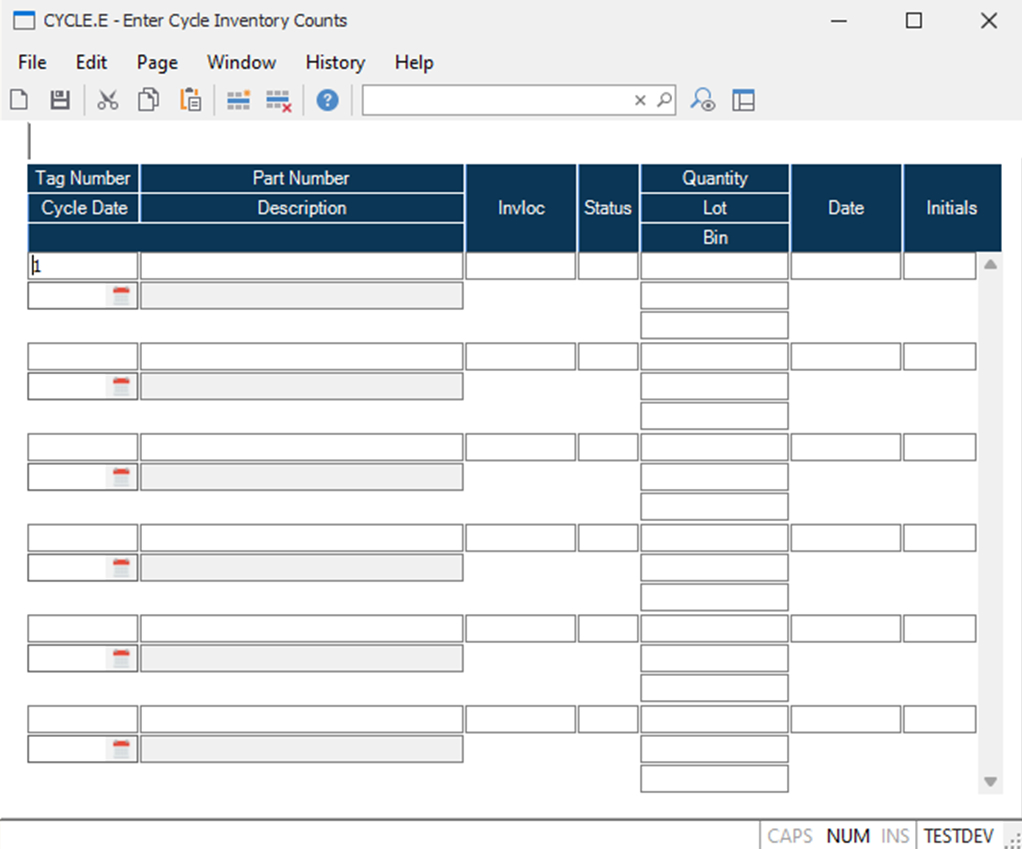
6. Manager Approval and Posting using CYCLE.R3:
- Run Cycle.R3 again for managerial approval.
7. Post the adjustments generated via the counts via CYCLE.P2
- Once approved, running this process will post cycle tags to inventory, creating the inventory adjustments automatically, posting to accounts entered in INV.CONTROL screen referenced prior.
Manual Maintenance and Cleanup if things are not automated
1. Regularly check for unposted tags using CYCLE.R4
- Automate a batch process to purge any open tags that weren’t posted the prior day before starting a new cycle count (Cycle.P1).

2. Clear Old Tags using CYCLE.P3 OR CYCLE.P5:
- You can choose to cancel specific tags on an entire date or use cycle tag ranges.
Best Practices
- Automate Routine Tasks: Leveraging Rover ERP’s automation capabilities for generating count records, creating count sheets, and purging old tags can save significant time and reduce errors.
- Regular Reviews: Schedule regular reviews of your cycle counting process to ensure it remains effective and aligned with your inventory management goals.
- Managerial Oversight: Ensure that counts and updates receive managerial approval to maintain accountability and accuracy in your inventory records.
- Visibility: Task your teams with making inventory accuracy, # of counts performed daily a KPI to engage your team.
Takeaways
By leveraging Rover ERP cycle counting processes, you can significantly enhance the accuracy, efficiency, and reliability of your inventory data. Implementing a structured cycle counting process helps in maintaining perpetual inventory accuracy, ultimately leading to better decision-making and improved operational efficiency.
With Rover ERP, you have the tools at your disposal to level up your inventory management and ensure your business runs smoothly. Start implementing these strategies today and see the difference in your inventory accuracy and overall management efficiency.
Check back with us in a couple of weeks for a discussion led by a founder of Rover and myself on best practices overall in the inventory module.


